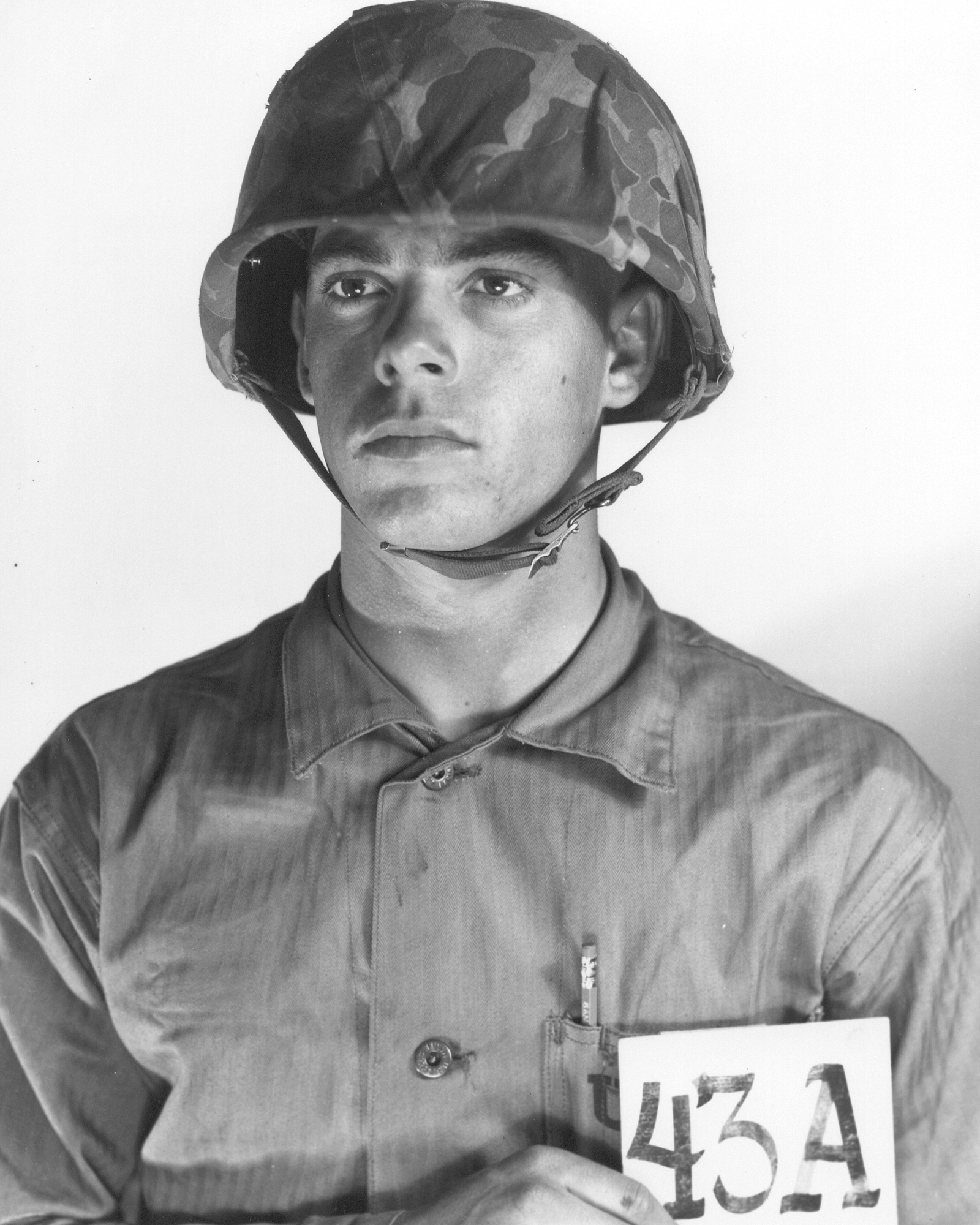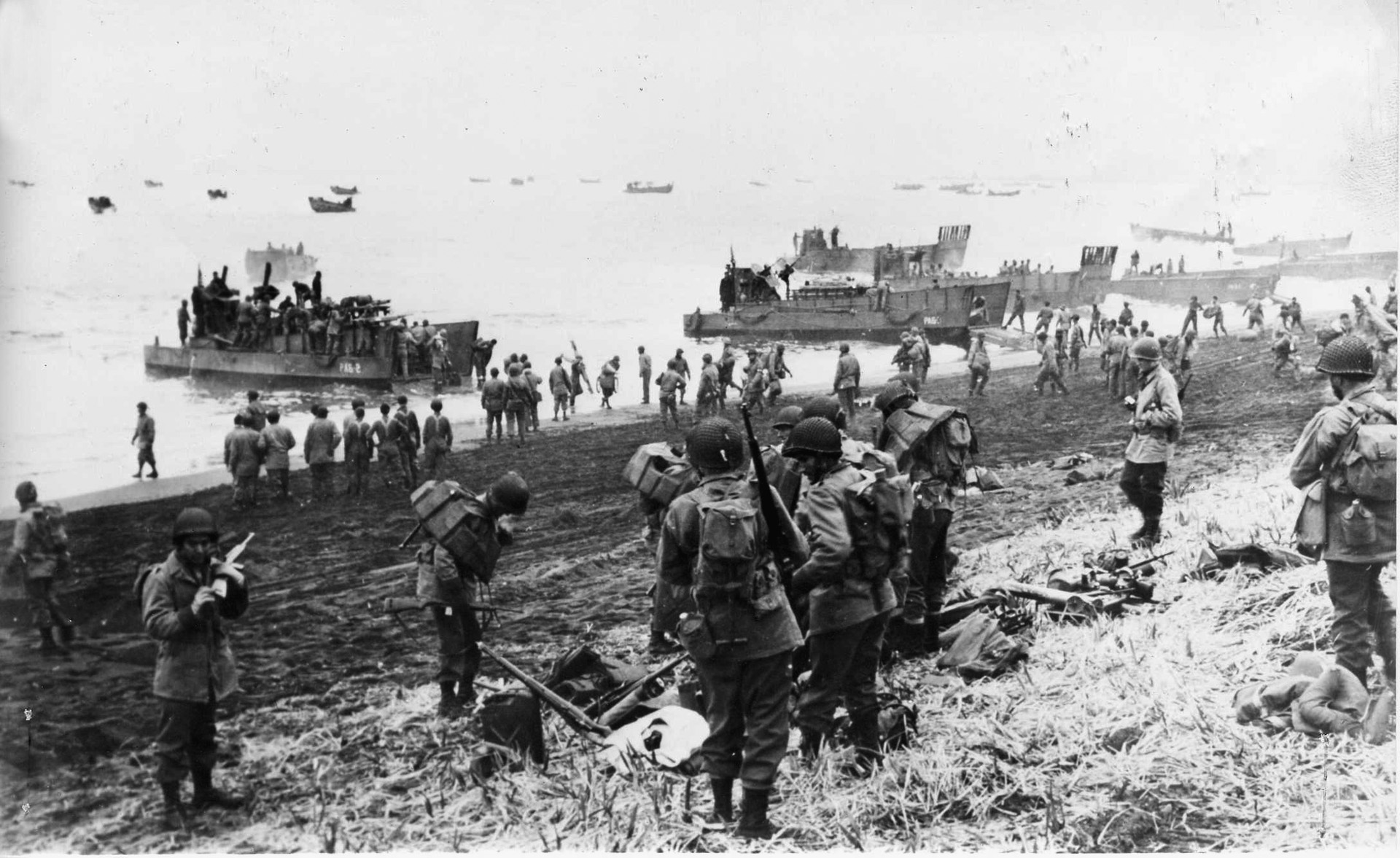Great Battles in Marine Corps History - Marines Forge Legends in Guadalcanal
The Battle of Guadalcanal was a grueling six-month campaign waged in the Solomon Islands and stands as a pivotal turning point in the Pacific War. From August 1942 to February 1943, US Marines, spearheaded by the 1st Marine Division along with supporting elements from the US Army and Navy, engaged in a ferocious struggle against a determined Japanese force for control of this strategically vital island. The campaign, characterized by brutal jungle warfare, relentless naval battles, and devastating losses on both sides, ultimately shifted the momentum of the war in favor of the Allies and forged the legend of the Marines on Guadalcanal. To this day, 1st Marine Division’s seal references their victory over incredible odds.
Strategic Significance
Guadalcanal, a seemingly unremarkable island in the vast expanse of the Pacific, held immense strategic significance. The Japanese, seeking to dominate the South Pacific, began constructing an airfield on the island in 1942; if completed it would pose a direct threat to Allied supply lines to Australia and would serve as a springboard for further Japanese expansion. Recognizing the grave danger, the Allies, spearheaded by the Marines, launched a daring offensive to seize Guadalcanal and deny the Japanese this strategic advantage.
Troops in Contact
The 1st Marine Division, under the command of Major General Alexander Vandegrift, bore the brunt of the fighting on Guadalcanal. While we do tend to remember great units by their commanders, spare a moment to remember the enlisted Marines who did a lion's share of the face to face combat. The major players in this multilayered conflict included:
1st, 5th, and 7th Marine Regiments - These infantry regiments formed the backbone of the ground forces, engaging in fierce jungle combat and enduring relentless Japanese counterattacks.
1st Raider Battalion - Led by the legendary Lieutenant Colonel Merritt A. Edson ( "Red Mike" Edson), this elite unit played a crucial role in several key battles, including the defense of Edson's Ridge.
1st Parachute Battalion - This battalion, despite suffering heavy casualties in earlier fighting at Tulagi and Gavutu, provided crucial reinforcements during the critical defense of Henderson Field.
Supporting Units - Various other Marine units provided vital support, including artillery battalions, engineers, and medical personnel.
The Ramp Is Down
On August 7th, 1942, the 1st Marine Division stormed ashore on Guadalcanal, achieving tactical surprise against the Japanese defenders. The Marines quickly captured the unfinished airfield, which was later christened Henderson Field in honor of a Marine aviator killed at the Battle of Midway. However, the Japanese were far from defeated and launched a series of determined counteroffensives to reclaim the island.
What ensued was a series of bloody battles fought in the dense, unforgiving jungles and along the ragged coastline. The Marines, battling tropical diseases, supply shortages, and relentless Japanese attacks, fought with extraordinary valor and tenacity. As comes as no surprise to anyone who has watched Marines fight, they put solid foot to ass in a variety of smaller battles.
Battle of Tenaru - A ferocious night battle in August where Marines from the 1st Raider Battalion and the 1st Marine Regiment repulsed a Japanese assault, inflicting heavy casualties.
Battle of Edson's Ridge - A desperate defense of Henderson Field in September, where Edson's Raiders and elements of the 1st Parachute Battalion held off repeated Japanese attacks, despite being heavily outnumbered.
Matanikau River Battles - A series of engagements along the Matanikau River in September and October, involving the 1st and 7th Marine Regiments, aimed at disrupting Japanese reinforcements and securing the Marines' tenuous foothold.
But What About Our Boats?
The struggle for Guadalcanal extended beyond the island itself. The waters surrounding Guadalcanal became a ferocious battleground as the US Navy and the Imperial Japanese Navy clashed in a series of naval engagements. These battles, often fought at night in close quarters, were some of the most brutal in naval history. (Future President John F. Kennedy’s PT boat was destroyed here for example, though not until August of '43.)
Battle of Savo Island - A disastrous defeat for the US Navy in August, where several Allied cruisers were sunk.
Battle of the Eastern Solomons - A carrier battle in August that prevented Japanese reinforcements from reaching Guadalcanal.
Battle of Cape Esperance - A US Navy victory in October, sinking several Japanese warships.
Naval Battle of Guadalcanal - A decisive battle in November that thwarted Japan's final attempt to reinforce the island and bombard Henderson Field.
Victory By Attrition
By late 1942, the tide began to turn decisively in favor of the Allies. The Japanese, facing mounting losses and unable to effectively resupply their forces, began to withdraw from Guadalcanal. The Marine Corps has a legacy as being a force of nature in combat, but the true strength of the US military is logistics, supplying them and denying them, and the denied Japanese couldn’t continue indefinitely. The final Japanese evacuation took place in February 1943, marking the end of the campaign.
Casualties and Significance
The Battle of Guadalcanal was a costly victory for the Allies. Casualty figures are estimates, but they paint a grim picture:
Japanese - Approximately 24,000 killed or missing
US / Allied Forces - Approximately 1,600 killed, 4,200 wounded, and thousands more succumbing to disease
Despite the heavy losses, Guadalcanal proved to be a turning point in the Pacific War. It marked the Allies' transition from defensive to offensive operations, effectively seizing the strategic initiative from the Japanese. The campaign also exposed weaknesses in Japanese tactics and logistics, while demonstrating the fighting spirit and resilience of the US Marines. Guadalcanal paved the way for future Allied offensives in the Pacific, ultimately leading to the defeat of Japan.



%201.svg)











